 |
 |
 |
| |
Raltegravir Clinical Efficacy Against B Subtype
and Non-B Subtype HIV-1 is Similar
|
| |
| |
Reported by Jules Levin
Ninth International Congress on Drug Therapy in HIV Infection, Glasgow Nov 10 2008
H. Teppler1, J. Rockstroh2, R. Isaacs1, H. Wan1, C. Harvey1, R. Danovich1, M. Miller1, and
B.-Y. Nguyen1 for the Protocol 004, BENCHMRK-1, and BENCHMRK-2 Study Groups
1Merck Research Laboratories, Pennsylvania, USA and 2University of Bonn, Bonn-Venusberg, Germany
AUTHOR CONCLUSION
Raltegravir shows similar in vitro activity against subtype B and non-B HIV
Based upon data available from 3 randomized clinical trials, raltegravir exhibits
comparable antiviral clinical activity against B and Non-B HIV-1 infection in treatment naive patients up to 96 weeks and in treatment experienced patients up to 48 weeks
-- While the limited data preclude conclusions on individual Non-B Subtypes,
all subtypes to date appeared to show favorable responses
Resistance mutations that arise at failure for Non-B viruses are similar to those observed previously, specifi cally at positions N155H and Y143R
Abstract
Purpose of Study: Raltegravir (RAL) is the fi rst approved HIV integrase inhibitor and has demonstrated potent efficacy in both treatment-experienced and -naive HIV-infected patients (pts). This analysis reports long-term efficacy data from 1 Phase II and 2 Phase III studies in pts infected with non-B subtype virus.
Methods: Each study was double blind and randomized; all pts received a background ART regimen (see Table). Primary results have been presented for each study. Protocol (P) 004 in treatment naive pts was a dose-ranging study of RAL vs efavirenz (EFV) until week (wk) 48 after which all pts in RAL groups received 400 mg b.i.d. BENCHMRK-1 and -2 were identical Phase III studies using RAL at 400 mg b.i.d. vs placebo (PBO) in highly treatment experienced pts with multi-drug resistant virus failing other therapies. Each of the 3 studies showed potent clinical effi cacy for RAL treated pts. In this analysis, P004 results are shown for all RAL dose groups combined at wk 96, and BENCHMRK-1 and -2 results are shown combined at wk 48. Non-B subtypes were combined for the analyses due to small numbers of each specific non-B subtype.
Results: In total, 622 pts were randomized to RAL and 275 to comparator across the 3 studies. Non-B subtype virus was isolated at baseline in 62 pts in the RAL groups (23 from P004), and in 23 pts in the comparator groups (8 from P004). Subtypes AE and D were most common, isolated in 40 and 8 pts, respectively. Data are available for 58/62 and 22/23 of pts with non-B subtype virus using the observed failure approach for % with RNA < 50 copies/mL (Table). RAL treated pts demonstrated increases from baseline in CD4 of 216 and 250 cells/mm3 for B and non-B, respectively, at wk 96 in P004, and of 105 and 150 cells/mm3, for B and non-B, respectively, at wk 48 in BENCHMRK-1 and -2.

Conclusion: In these studies, RAL showed similar and potent clinical effi cacy in patients with B subtype and non-B subtype HIV in both treatment naive and treatment experienced populations.
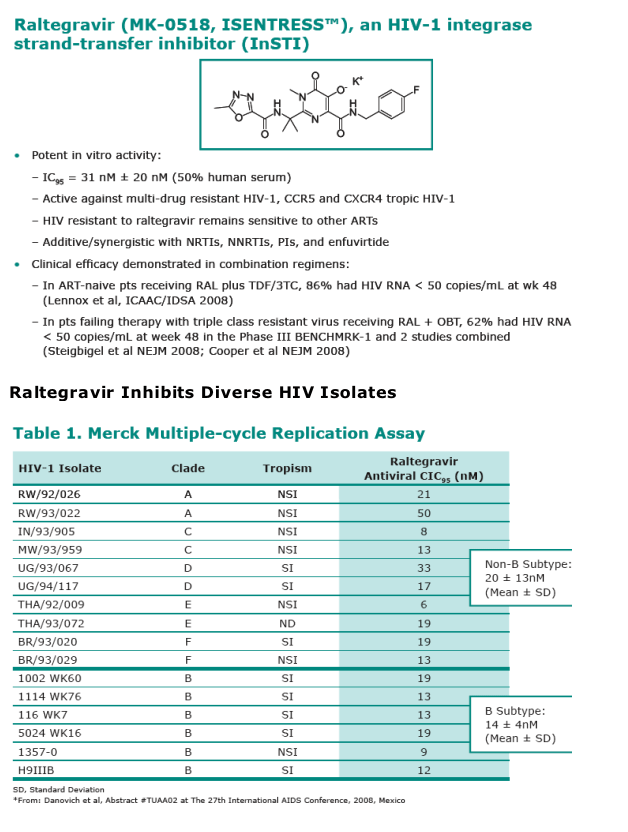
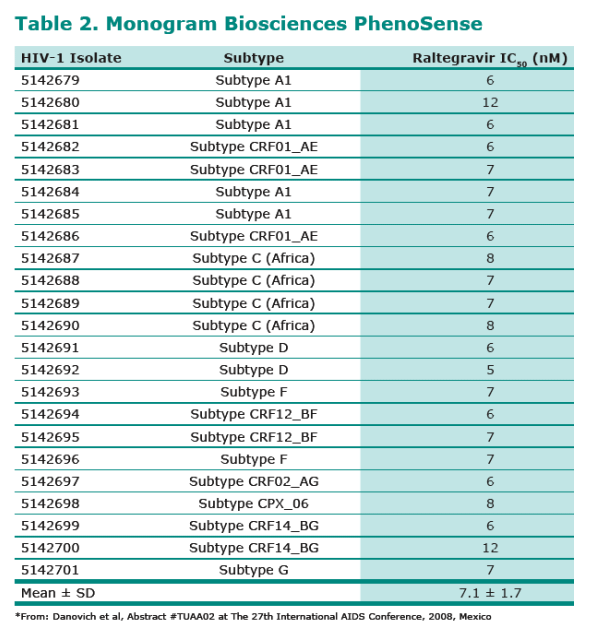
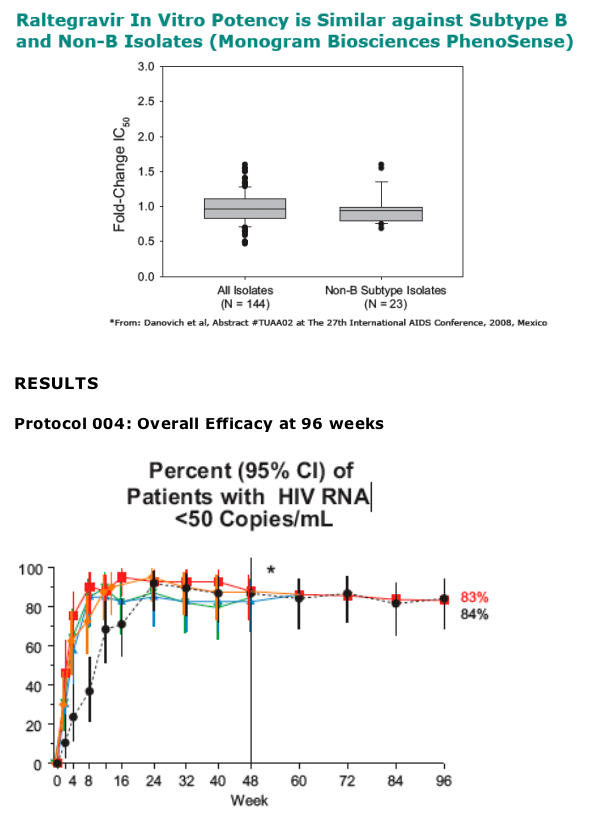
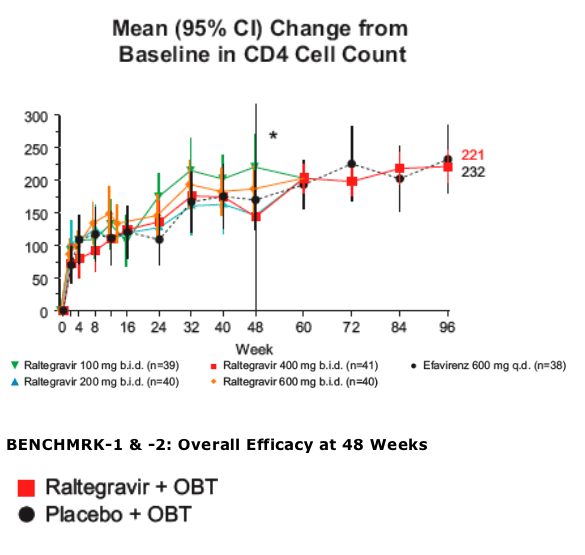
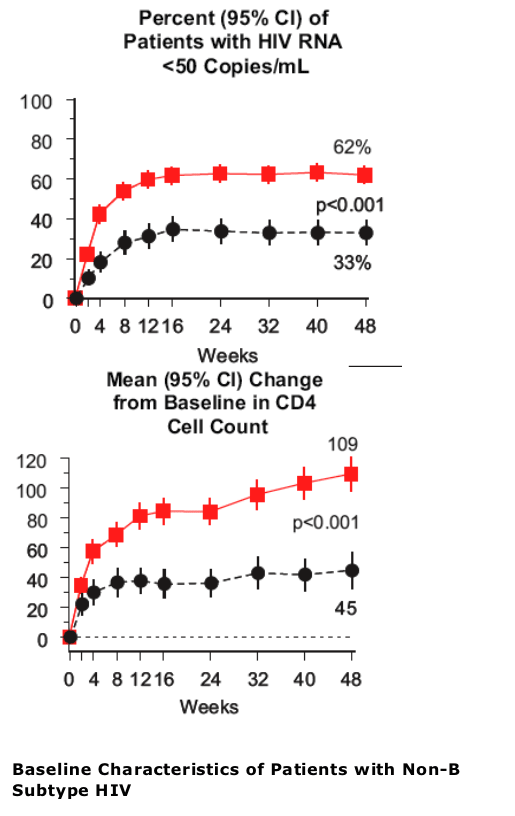
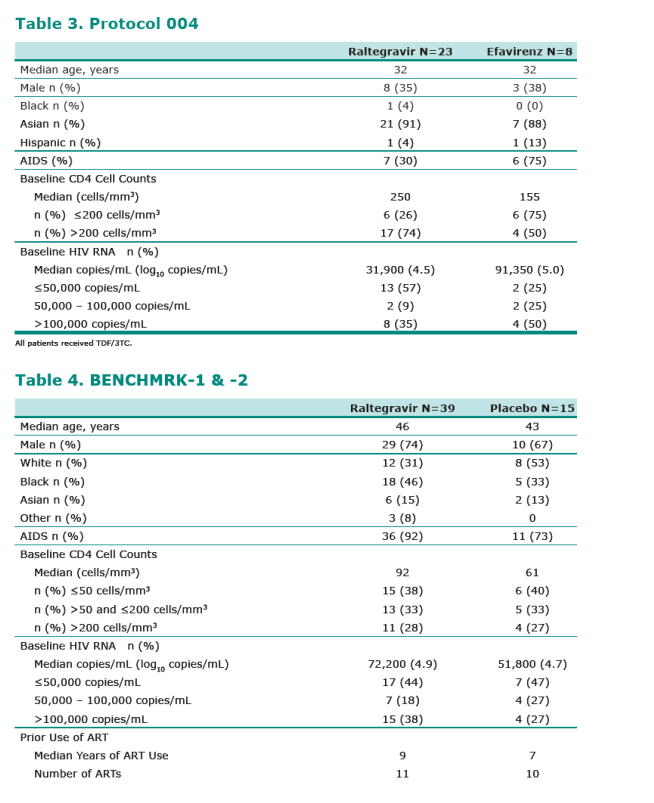
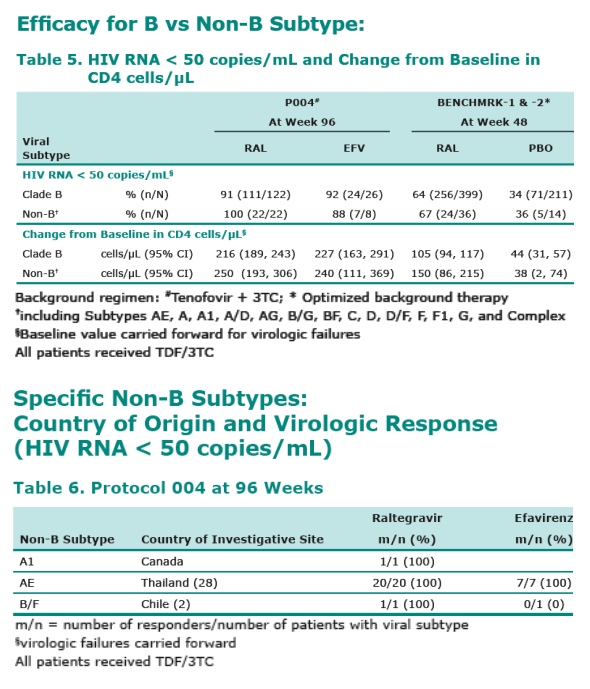
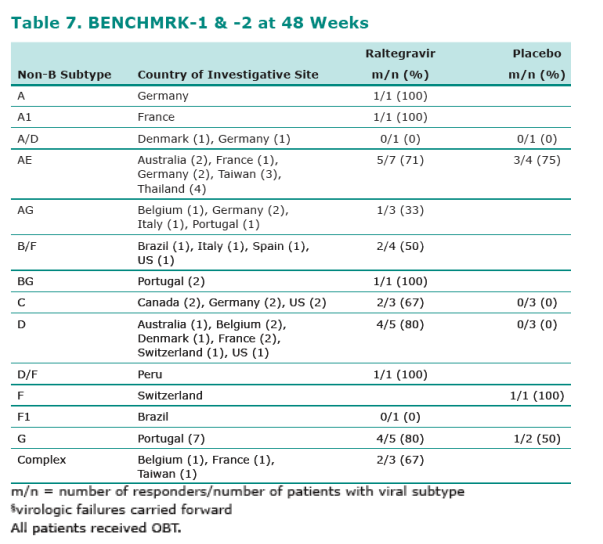
Mutation Analysis of Non-B Subtype Virologic Failures
In non-B subtype infections, there were
-- no failures in the raltegravir group in P004
-- 7 virologic failures in the raltegravir group in BM 1 and 2
4 had treatment resistance-associated mutations (RAMs) at time of failure
One patient with subtype AG virus demonstrated slower decline in HIV RNA and was considered a virologic failure at week 16, although did not meet the protocol defi nition of VF and went on to achieve HIV RNA <400 by week 48 and has subsequently been undetectable without modifi cation to OBT. In this patient RAM at Week 16 was N155H.
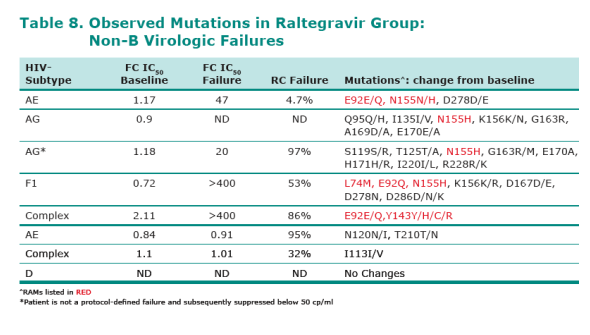
|
| |
|
 |
 |
|
|